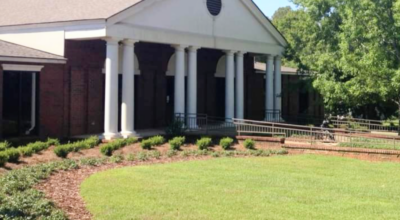New study examines automotive industry’s impact on county
Published 2:37 pm Thursday, April 25, 2013
The automotive industry has had a large economic impact in Crenshaw County over the past 10 years, as members of the County Commission and other local leaders learned at a recent workshop.
Wood Herren, a lawyer with Bradley Arant Boult Cummings LLP of Birmingham who specializes in tax abatements, and Dr. Phillip Mixon, assistant professor of economics and research economist at Troy University, were the two speakers.
Mixon presented an economic analysis of the automotive industry in Crenshaw County.
Mixon said that the study attempts to measure how much the economy is working.
“Employers hire someone, who gets the income and then spends that income in the local community at somewhere like the grocery store,” he said. “Then that store will pay someone who will spend their money. It’s called the velocity of money — how many times will that money be spent?”
According to Mixon’s study, the total economic activity from the automotive industry in the county was $419,537,664; however, he said that number is “very misleading.”
“Did Crenshaw County get $419 million? No, the companies did. More important to me are the employment numbers,” he said.
The study shows that 1,334 jobs were directly created from the automotive industry, 387 were created indirectly based on industry-to-industry transactions, and 257 jobs were created based on employee spending in the local economy, bringing the total to 1,978 jobs.
“Given the rural nature of Crenshaw County, this is an impressive employment multiplier,” the report states.
Mixon said that from the studies he had looked at, the number of people in Crenshaw County is actually increasing despite studies showing that the population was expected to decrease before automotive industries came to the county.
Mixon’s original report indicated that around $6.6 million in tax revenues (before any abatements) would have been generated to the county by the automotive industry and its employees, but County Commissioner Charlie Sankey questioned the number.
“We’ve basically had level funding for the last four or five years,” Sankey said.
Sankey asked if the study factored in money spent outside the county in places like Troy or Greenville.
He said he feels that much of the money generated is spent in other places before it circulates in Crenshaw County.
Mixon said he would double-check the model, and he issued a revision of the study on Friday.
He called it an “extremely conservative estimate” based on employees spending roughly seven cents of every dollar earned in Crenshaw County stores as opposed to the 60 percent of every dollar formula used in the original study.
The change drops the estimated tax generated from $6,625,599 to $337,798.
“Note the absence of significant retail opportunities have severely limited the tax collection,” the revised report states.
The revised number also only includes tax revenues for the county and not local municipalities.
Despite the changes, the report concludes that “the rewards of these firms far exceed the cost of bringing them in or maintaining a relationship.”
Herren also gave an overview of tax abatements, their uses in bringing industry to an area, and some of the legal requirements of tax abatements.
“Abatements are just one tool of a variety of tools that counties use to develop business in their areas,” he said.
Abatements are when a county or city agrees to cut the amount of taxes paid by a company for a set amount of time.
“You can only abate the non-educational portions of taxes,” Herren said.
Herren also said that his experience is that around 75 percent of projects ask for new abatements because the scope of the industry has been increased.
“Abatements are not an entitlement, but industries expect it and look for it,” he said.





